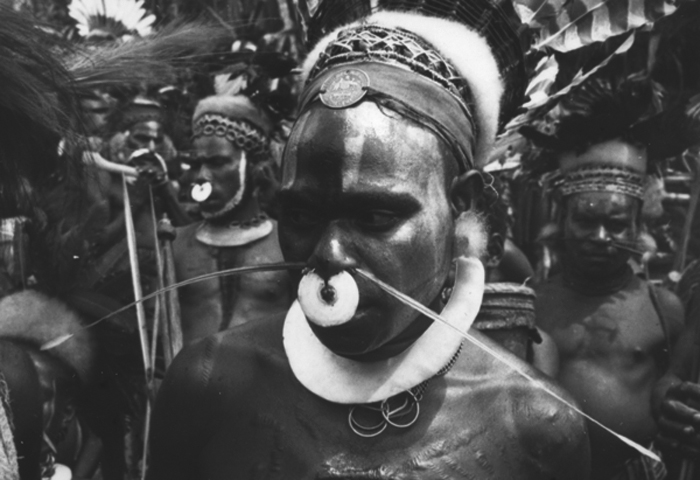
| In order to carry out the directives issued by the Australian Administration, the patrol officers appointed local men to be responsible for building and maintaining the haus kiaps, maintaining the kiap road where it crossed their clan territory, dealing with local arguments and reporting any infringements of the colonial law. There was a two-level hierarchy: "luluai" was the more important position; "tultul" was of lesser importance. |

116-05 Tultul Nakemba of the
Angoian clan wears his bras
together
with the bilas he has donned
for the August 25, 1963 singsing in honor of Peter Vayda.
| Working from the census data they
collected, the patrol officers tried to choose a man of importance
from each clan. Since the patrol officers themselves, however, were
usually not
familiar with local politics, their choices sometimes did not
coincide with local perceptions of who were the most powerful men.
Thus a more complex situation emerged in which the power of the local,
traditional power-holders
was intertwined with newly empowered individuals who had been
appointed luluai or tultul. Each luluai and tultul was given a brass medal. These were usually worn on the forehead, and were referred to as "bras," hence the term "bras man." Influential men who had not been given "bras" were frequently refer to as "bossboi," a term widely used by Marig speakers, borrowed from Tok Pisin. |
| Written in 1996 |
Copyright © 1999-2011 Allison Jablonko. All Rights Reserved.